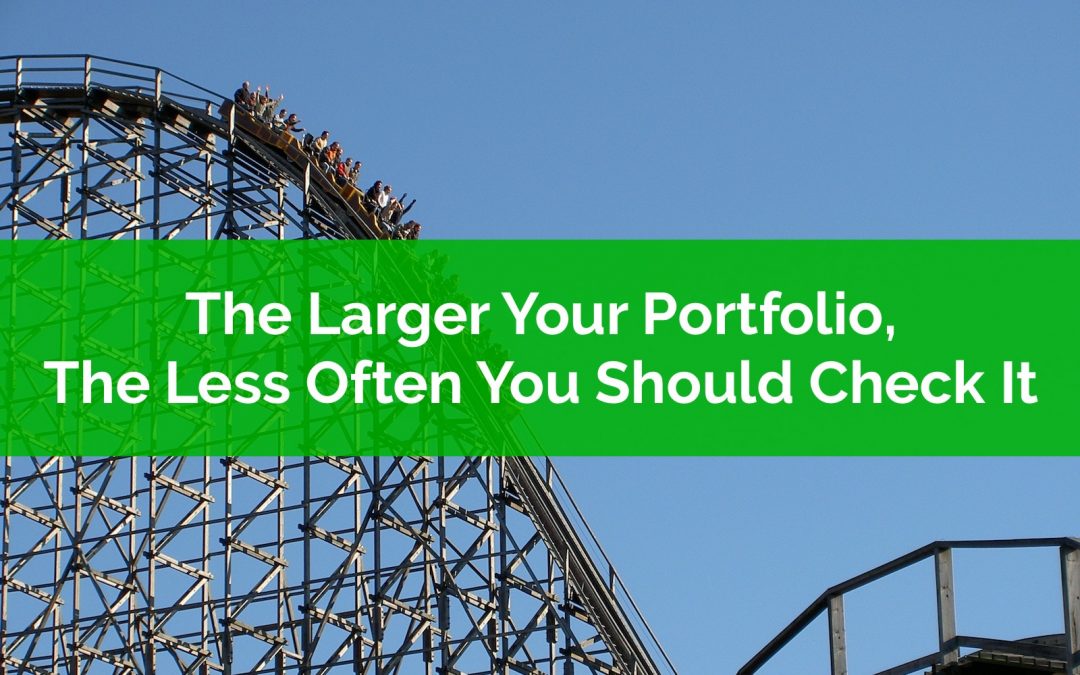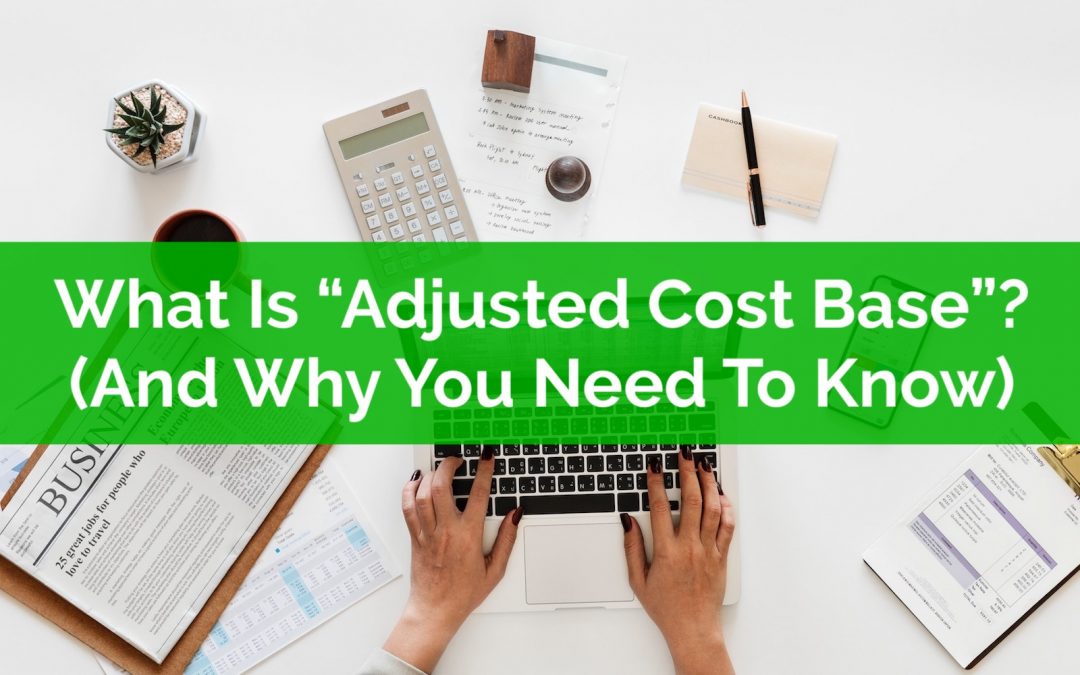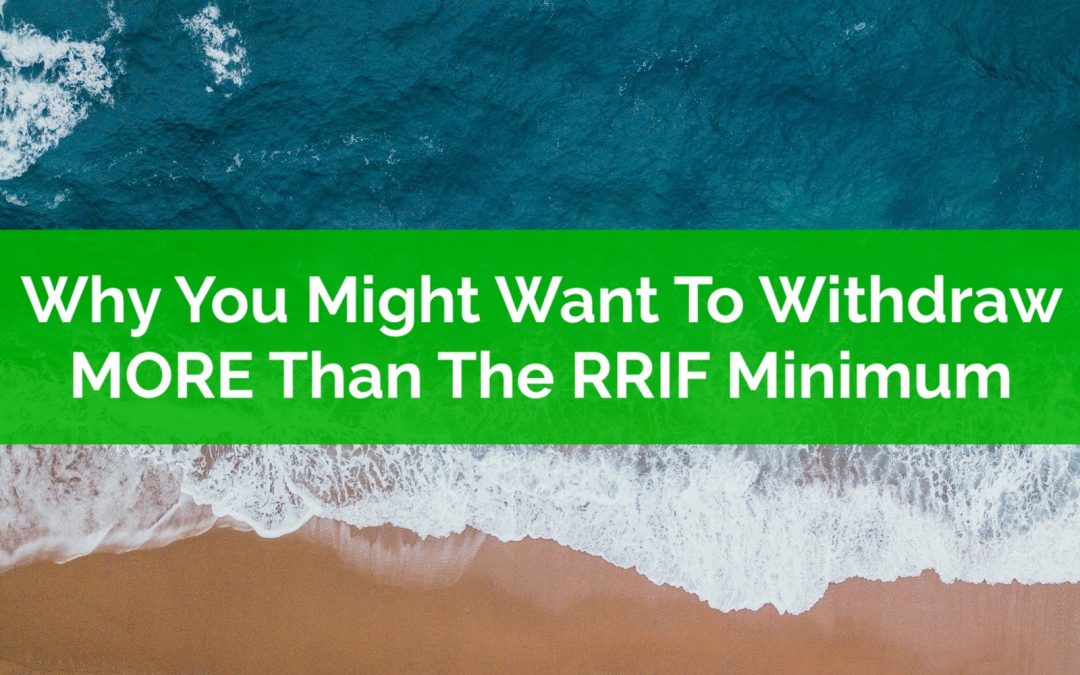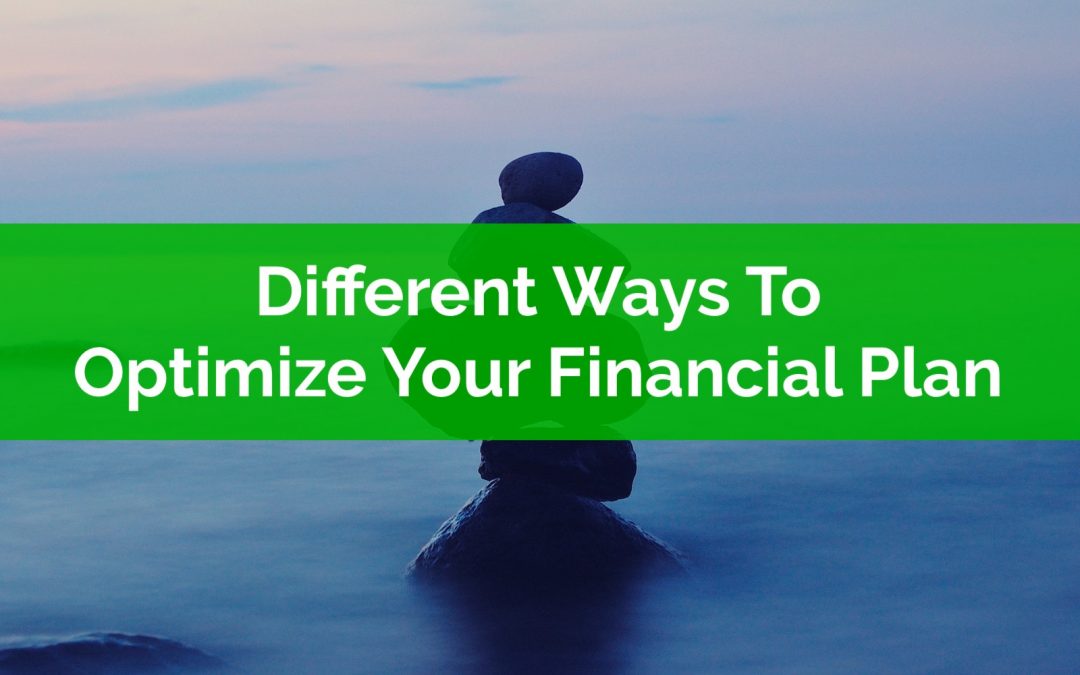
by Owen | May 16, 2022 | Behavioral Finance, Financial Planning, Investment Planning, Retirement Planning, Saving Money
When it comes to financial planning we often focus on the numbers, net worth, debt, rate of return etc. But half of financial planning has nothing to do with the numbers. Half of financial planning is about behavior. It’s about managing our behavior, our expectations, our emotions etc.
When it comes to personal finance, and specifically investing, we are often our own worst enemy. We make financial decisions based purely on emotion, often costing us more money down the road.
One of the most common mistakes we make is checking our investment portfolio too often. Investment portfolios are not something that should be checked daily or weekly (unless you’re day trading, which is a whole other conversation)
Checking our investment portfolios has become even easier with online brokerage accounts and financial aggregator apps like Mint.
But… just because it’s possible doesn’t mean you should.
The problem with checking your portfolio too often is that we don’t feel gains the same way we feel losses, even if they’re worth the exact same amount.
The emotional impact of a $10,000 loss is more than the emotional benefit from a $10,000 gain. It’s completely illogical, but that’s how we feel. We experience the emotional impact of losses more than gains. We remember losses more vividly, and for a longer period of time than we do for gains.
This is a problem when it comes to investing. Even though a well-diversified portfolio should gain over the long-term, it will likely experience some big swings in the short and medium-term. By checking our portfolios too often we experienced all those gains and losses, and because we feel losses more than gains, the net effect is that we can feel a bit sad.
What we need to do is check our portfolio less often, especially for medium and large portfolios. Let me explain why…

by Owen | Mar 20, 2022 | Behavioral Finance, Financial Planning, Investment Planning, Retirement Planning
Can you retire when the stock market is at an all time high? For many soon-to-be retirees this is an important question. It can be extremely nerve-racking to “pull the plug” and leave a stable income when investment values are at their peak.
But is this really a concern? Is it bad to retire when markets are at an all time high?
For many soon-to-be retirees, their investment portfolio will make up an important part of their future retirement income. Even retirees with a pension or full CPP/OAS will often have a small investment portfolio to support additional spending in retirement.
Many retirees worry about retiring at an all time high. They worry about a large decline in investment values soon after retirement. They believe this will dramatically impact their retirement plan. But is this concern justified? Or is this one of those biases that we’re all susceptible to?
Working for a few additional years would certainly help solidify a soon-to-be retirees financial plan, but at what cost? That lost time can never be recovered and could represent some “prime retirement years”. That income may also never be needed if everything goes to plan.
As it turns out, we’re actually at an all time high quite often, and the impact of retiring at an all time high isn’t even close to what we’d assume…

by Owen | Mar 12, 2022 | Investment Planning, Tax Planning
For many investors adjusted cost based is something they may never need to worry about (but should still be aware of!) For most investors who are only using tax-sheltered accounts like the TFSA or RRSP, they never need to worry about adjusted cost base (or ACB for short).
This is because ACB is only required to calculate capital gains tax, and because most investors are investing inside a tax-sheltered account like a TFSA or RRSP, this is a non-issue.
But for anyone with investments outside of a tax-sheltered account, adjusted cost base is extremely important! And your ACB is something that you need to stay on top of.
Adjusted cost based is something every individual investor needs to track on their own. Yes, some mutual funds, robo-advisors, or even brokerage accounts might track adjusted cost based for you, but in the fine print they typically tell investors to track it themselves too. Why? Because they don’t want to be held accountable for a tax issue in the future.
Here’s why we need to worry about ACB and some tips on how to track it…

by Owen | Feb 21, 2022 | Investment Planning, Retirement Planning, Tax Planning
At some point every person with an RRSP is going to need to make a decision about converting their RRSP to a RRIF. The Registered Retirement Income Fund (RRIF) works very similarly to the RRSP with a couple notable exceptions.
One of those exceptions is that there is a minimum RRIF withdrawal each year. Retirees need to make this minimum withdrawal from their RRIF each year and this minimum will slowly increase from year-to-year. The RRIF minimum will escalate each year as a retiree gets older. By the time a retiree reaches their mid-90s they are forced to withdrawal 20% of their RRIF each year!
Because the withdrawal is a minimum, and conversion from a RRSP to a RRIF is mandatory, this often leads people to believe that keeping money in a RRIF is a good idea. After all, if they’re being forced to take money out, wouldn’t that suggest that keeping money in is a good idea?
For many people, taking out only the minimum RRIF withdrawal each year is actually a bad idea. Many people would benefit from a different RRIF withdrawal strategy. Many people would benefit from taking out more than the minimum each year. They would increase their financial flexibility, they would decrease the tax on their estate, and they could even qualify for certain benefits late in retirement.
In this post we’ll look at RRIF withdrawal rules, the minimum RRIF withdrawal percentage by age, and we’ll explore two scenarios where we show how a retiree can benefit from RRIF withdrawals that are larger than the minimum.
We’ll also explore how this strategy is even more impactful after a large stock market correction.

by Owen | Dec 13, 2021 | Emergency Fund, Financial Planning, Insurance And Risk Management, Investment Planning
Is it safe to use your HELOC as an emergency fund? A typical emergency fund is between 3 months and 6 months of expenses, but that’s a lot of cash to have lying around!
Cash is the enemy of long-term goals. Holding too much cash makes it more difficult to achieve long-term goals like retirement. The more cash-on-hand there is, the lower the average investment return.
Holding some cash is good. A certain amount of cash-on-hand protects us against unexpected emergencies like a job loss, a disability, a health emergency etc. etc. But holding too much cash is bad.
For homeowners with a certain amount of home equity there is another option. This option allows homeowners to decrease the size of their emergency fund and put more into RRSPs and TFSA sooner. This can provide more investment growth and potentially a reduction in income tax and an increase in government benefits.
Homeowners with a certain amount of home equity could choose a hybrid option, with a smaller amount of cash-on-hand but leaning on a Home Equity Line of Credit (HELOC) for larger emergencies.
But is this hybrid option safe? Is it safe to use your HELOC as an emergency fund? Let’s take a look at why, and why not, to use your HELOC as an emergency fund.

by Owen | Nov 8, 2021 | Behavioral Finance, Financial Goals, Financial Planning, Investment Planning, Retirement Planning, Tax Planning
We want to make the most of our hard-earned money. But that can mean different things to different people. The way we “optimize” our financial plan can vary greatly from one person to the next.
There are a few different ways to optimize a financial plan. Some will be obvious and widely accepted, like minimizing income tax where possible, but some are a bit less obvious or will depend on personal preferences.
Because a financial plan represents our personal preferences and personal values, no two financial plans are the same.
While two people may have similar income, assets, and net worth, they could have dramatically different financial plans depending on what they’re optimizing for.
We all want to make the most of our money, but what that looks like will vary greatly from one person to the next.
Here are a few of the different ways you can optimize your financial plan… what are you optimizing for?
Page 6 of 15«...45678...»






